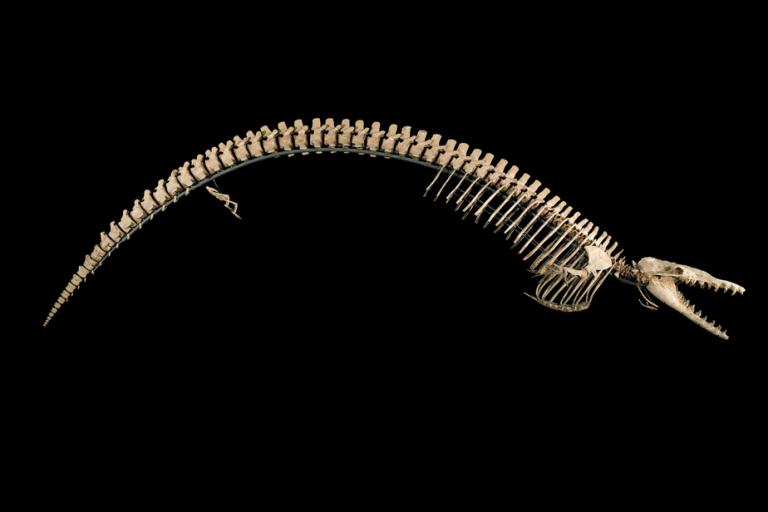Presentation of collections


The CR2P is intimately involved in the collections of the Muséum national d’Histoire naturelle (MNHN) and of Sorbonne University.
The national palaeontology collections at the MNHN comprise between 5 and 6 million specimens and microfossil slides. The link between our unit and the Collection Department is assured by Sylvain Charbonnier,assisted by several curators and technicians, most of whom are members of the UMR, the group being supported by a team of engineers and technicians from the Direction of Collections at the MNHN.

Galerie de paléontologie © CR2P Philippe Loubry

Aeger spinipes, crevette des calcaires lithographiques du Jurassique supérieur de Bavière (Allemagne) © CR2P Philippe Loubry

Triceratops calicornis, un spécimen découvert en 1911 par Sternberg dans le Crétacé supérieur du Wyoming © CR2P Lilian Cazes

Geocoma sp., ophiure du gisement de Canjuers (Jurassique supérieur), vue dorsale © CR2P Christian Lemzaouda

Cynthiacetus peruvianus (Mammalia, Cetacea). Provenance : Formation Otuma, Pérou © MNHN Bernard Faye

Helicoprion sp., Eugeneodontida, Chondrichthyens, Permien (env. -270 millions d'années). Oural, Russie © CR2P Christian Lemzaouda
|
Collections |
Conservation officers CR2P |
|---|---|
|
Invertebrates MNHN : Marins arthropods, echinoderms, constructors, molluscs |
|
To the above can be added the palaeontology collection at Sorbonne University, consisting, for the most part, of the historical collections of the Sorbonne. It comprises several hundred thousand fossils, most of which are invertebrates, an ensemble that distinguishes it from the collections at the Museum national d’Histoire naturelle (MNHN).
The palaeobotanic collection at the university comprises specimens collected from many countries and contains many « type » specimens of new species erected by researchers. The 15,000 samples in the palaeobotanic collection derive from the Boureau collection and many donations made by French and foreign geologists. Part of the collection of « type » and « figured » specimens features in the on-line « Palbot » database.
palaeobotany collection: http://www.upmc.fr/fr/culture/patrimoine/patrimoine_scientifique/collection_de_paleobotanique.html
“Palbot” database: http://albinoni.snv.jussieu.fr/
Sorbonne University : stephane.jouve(at)upmc.fr